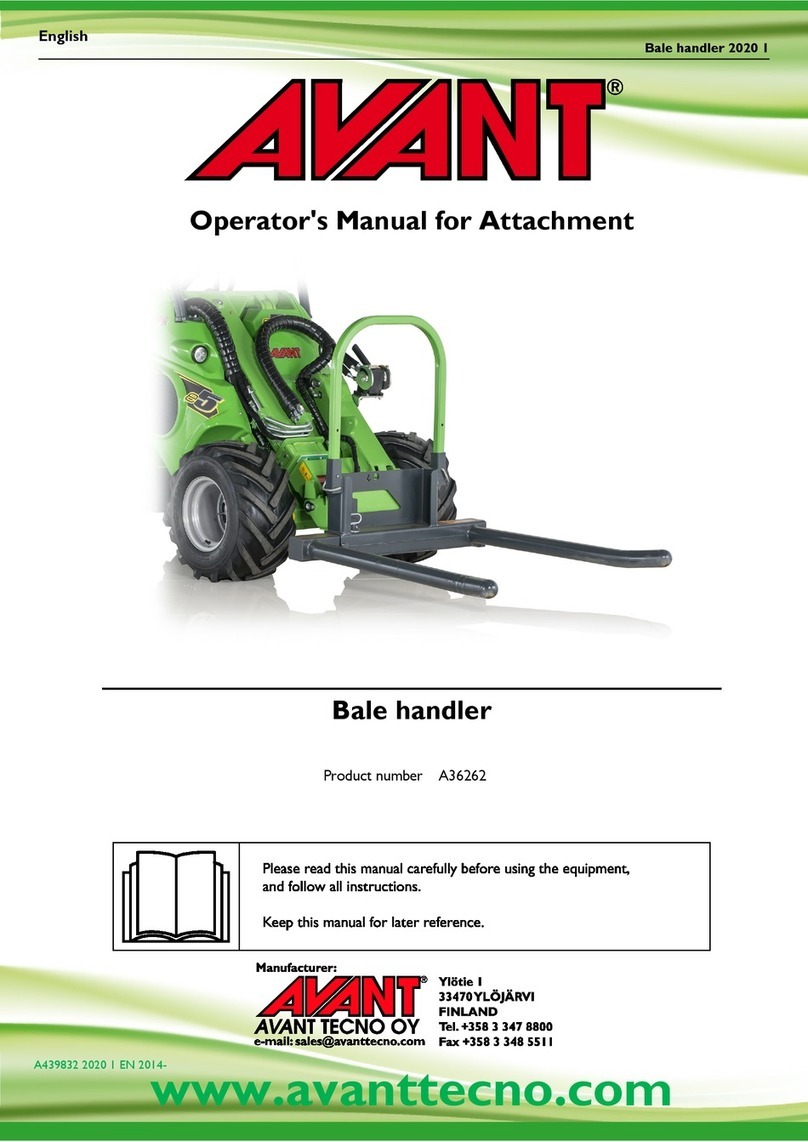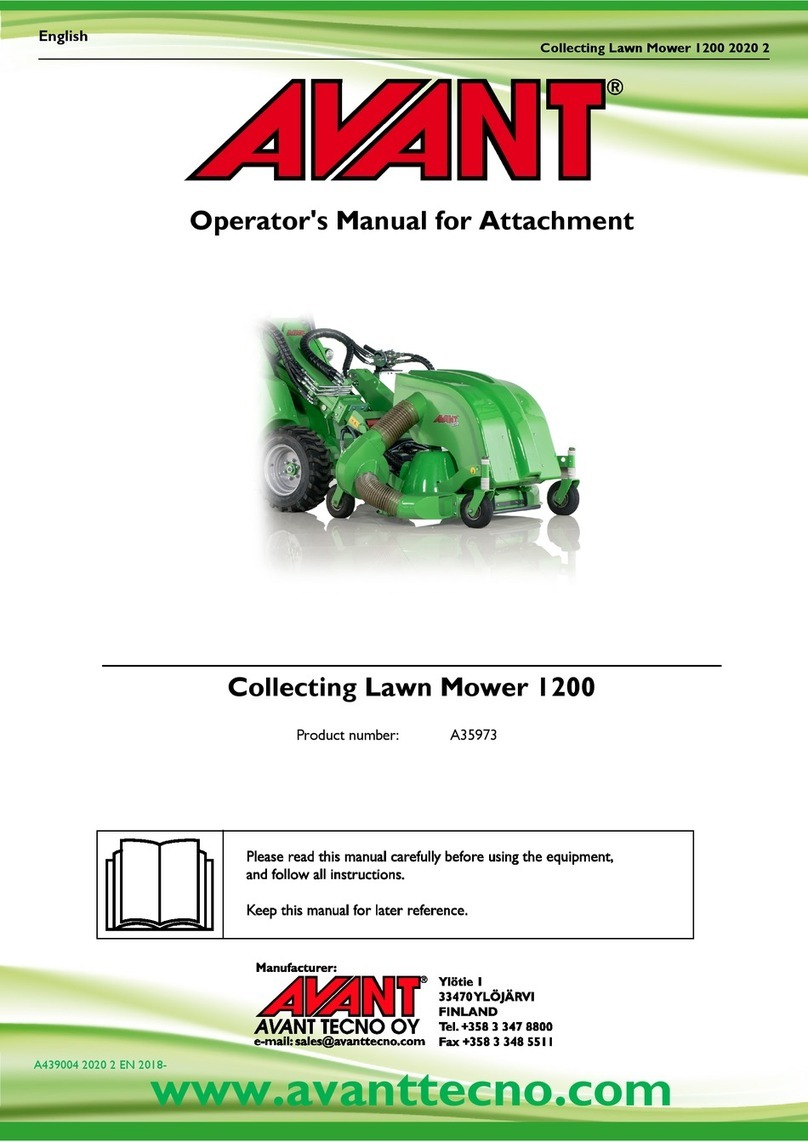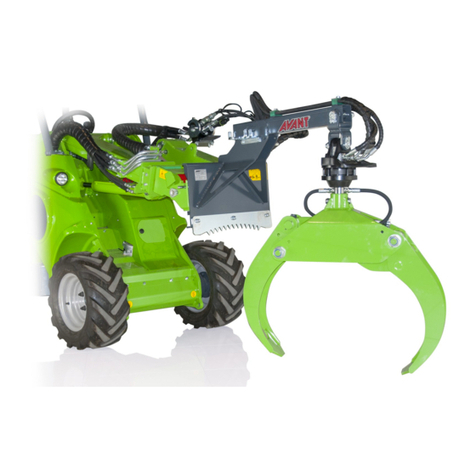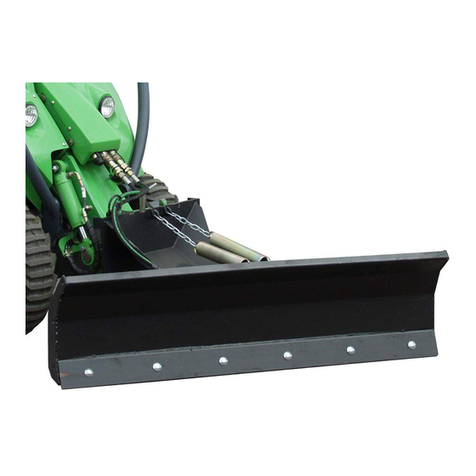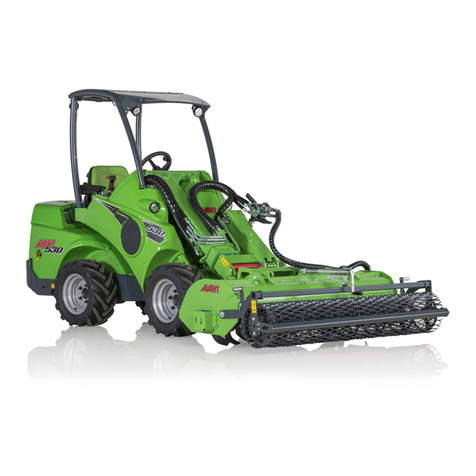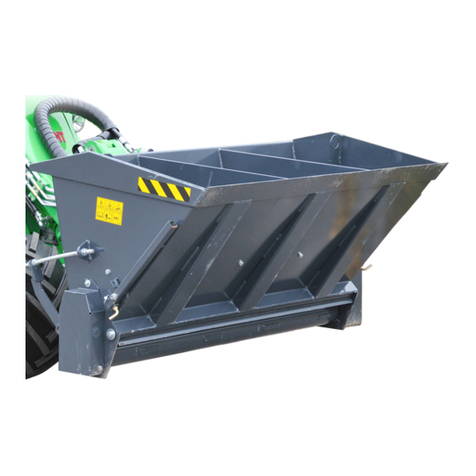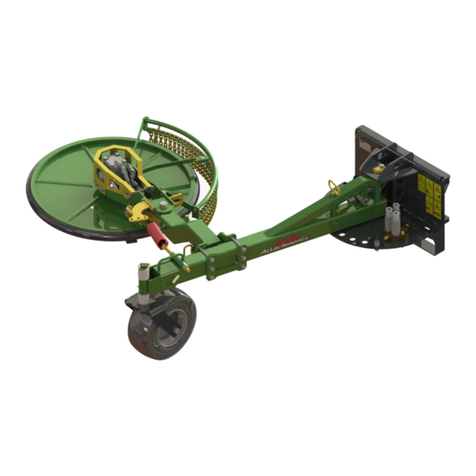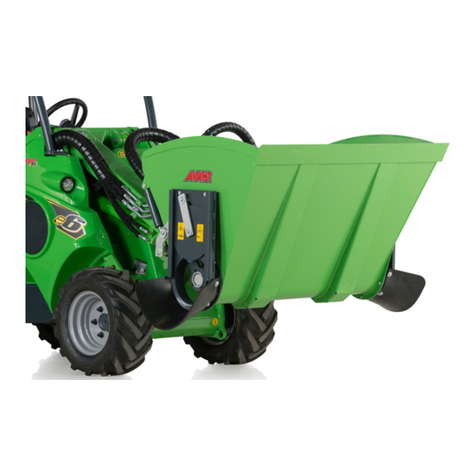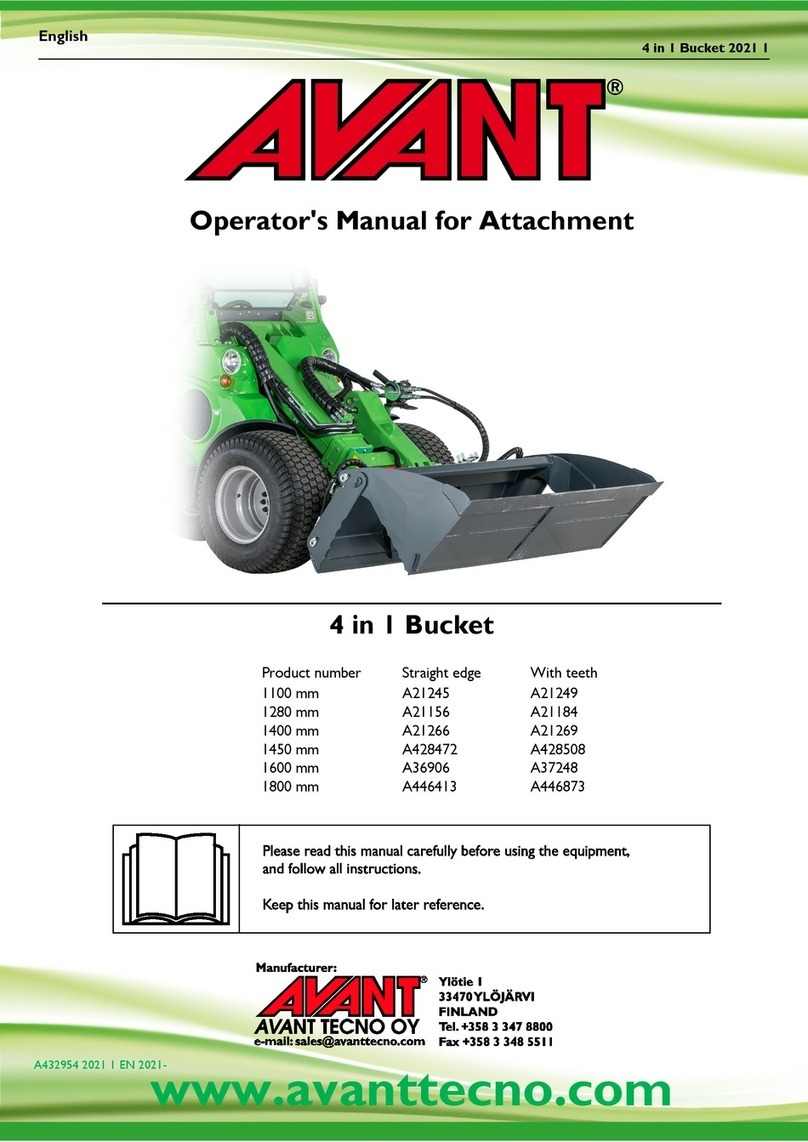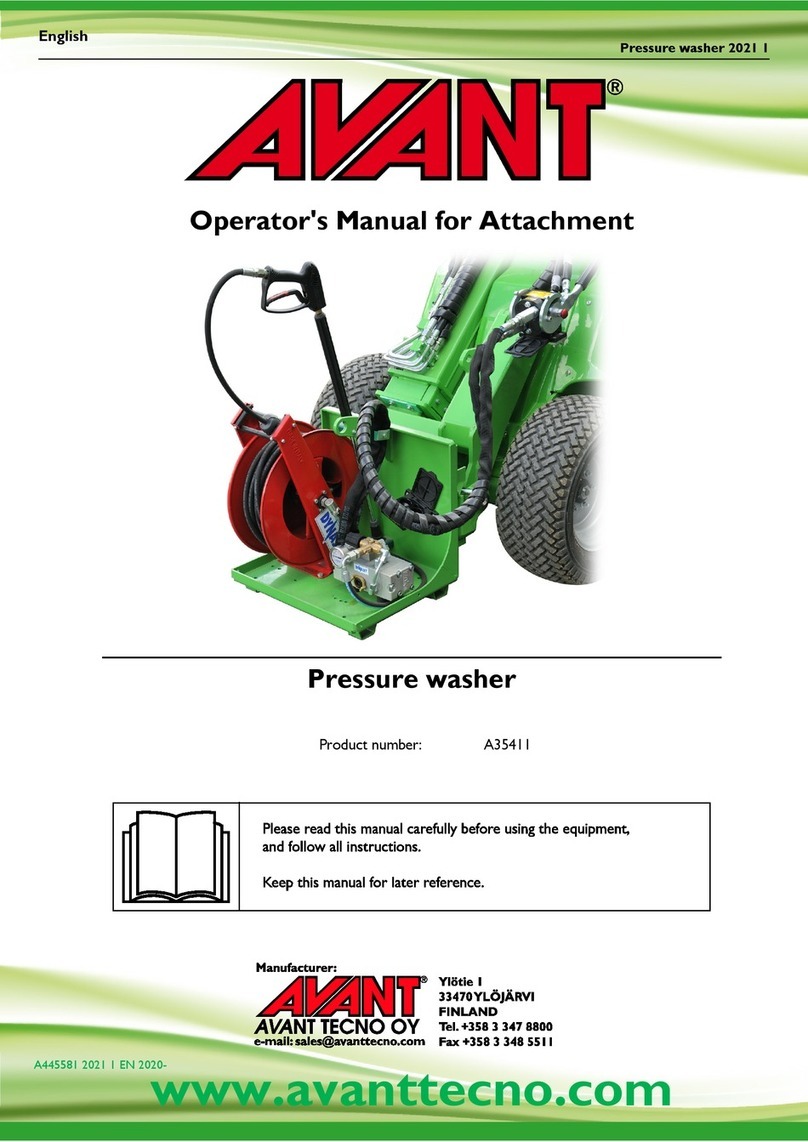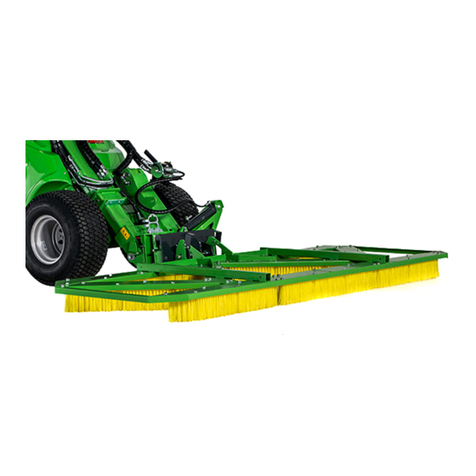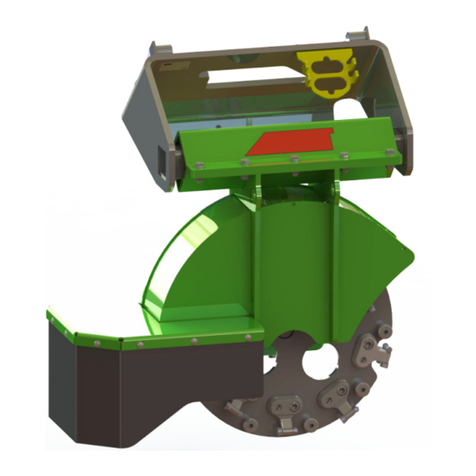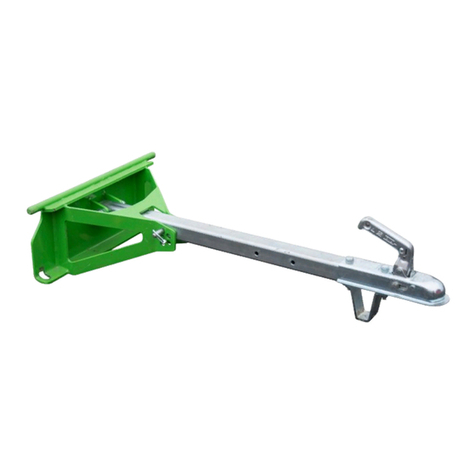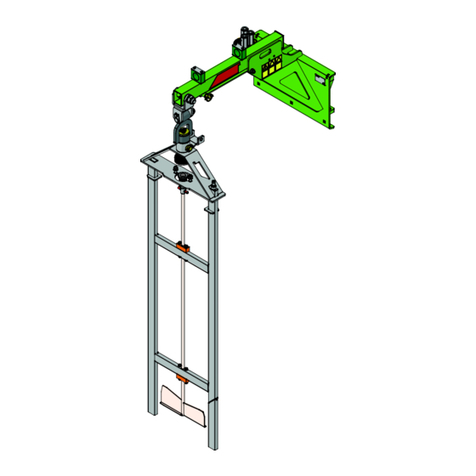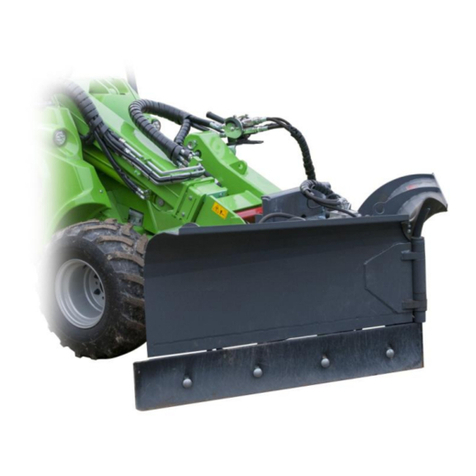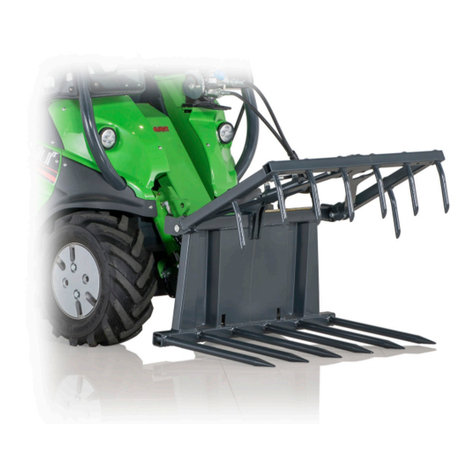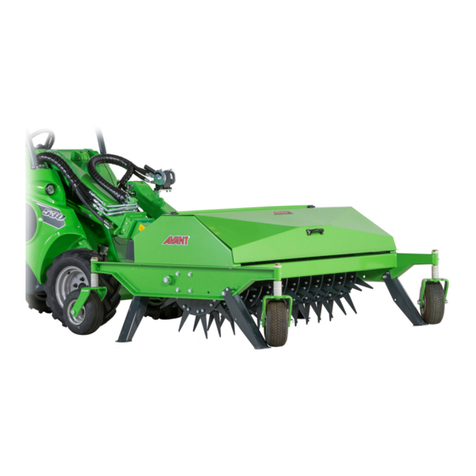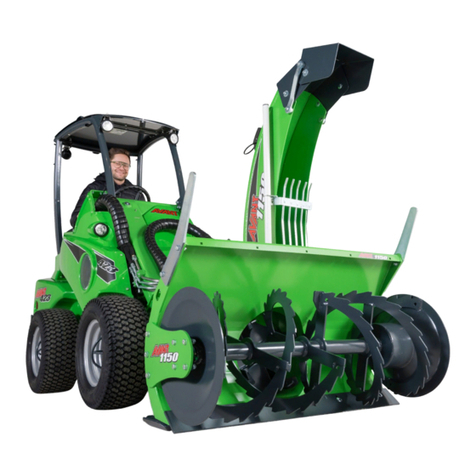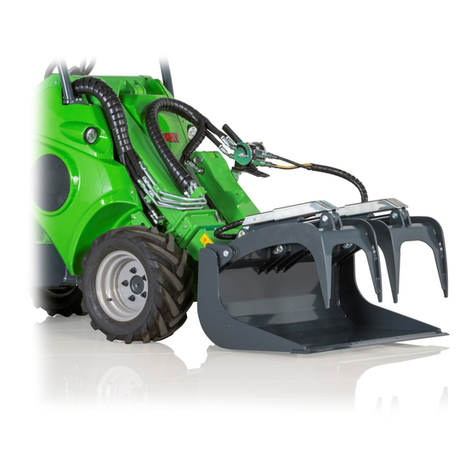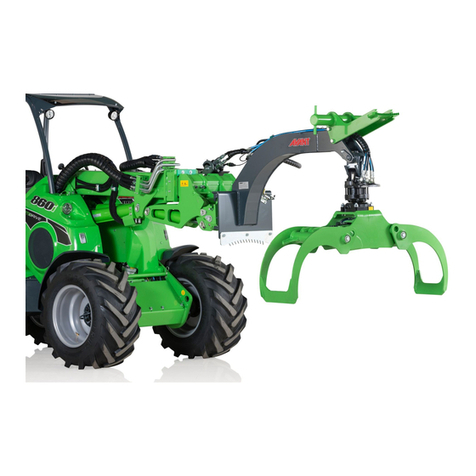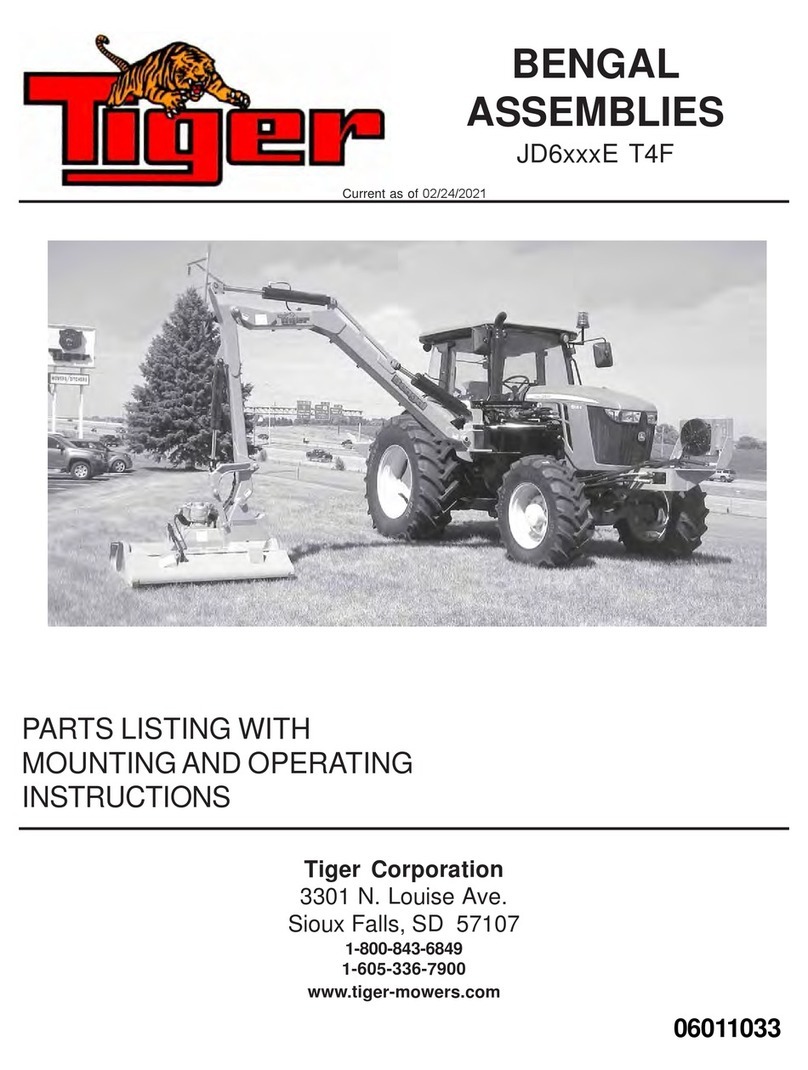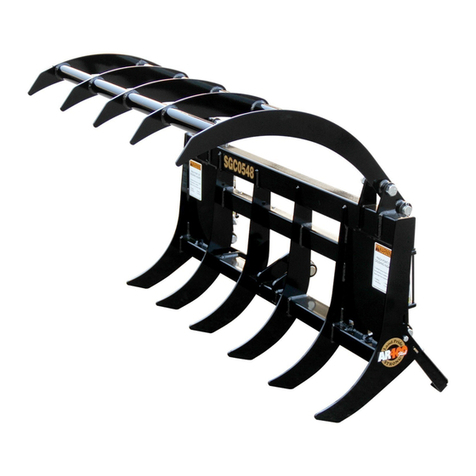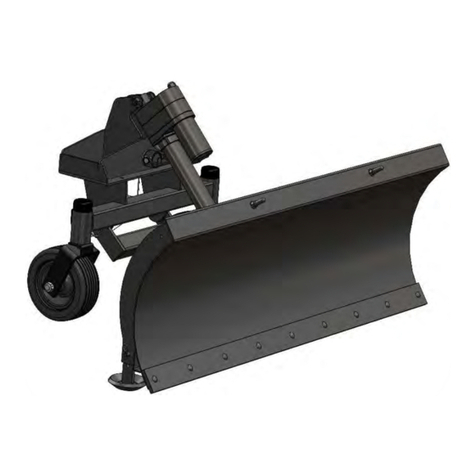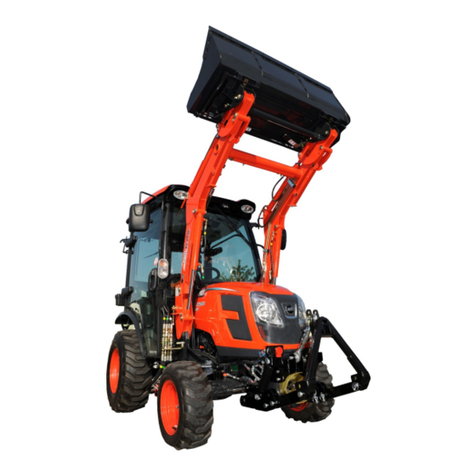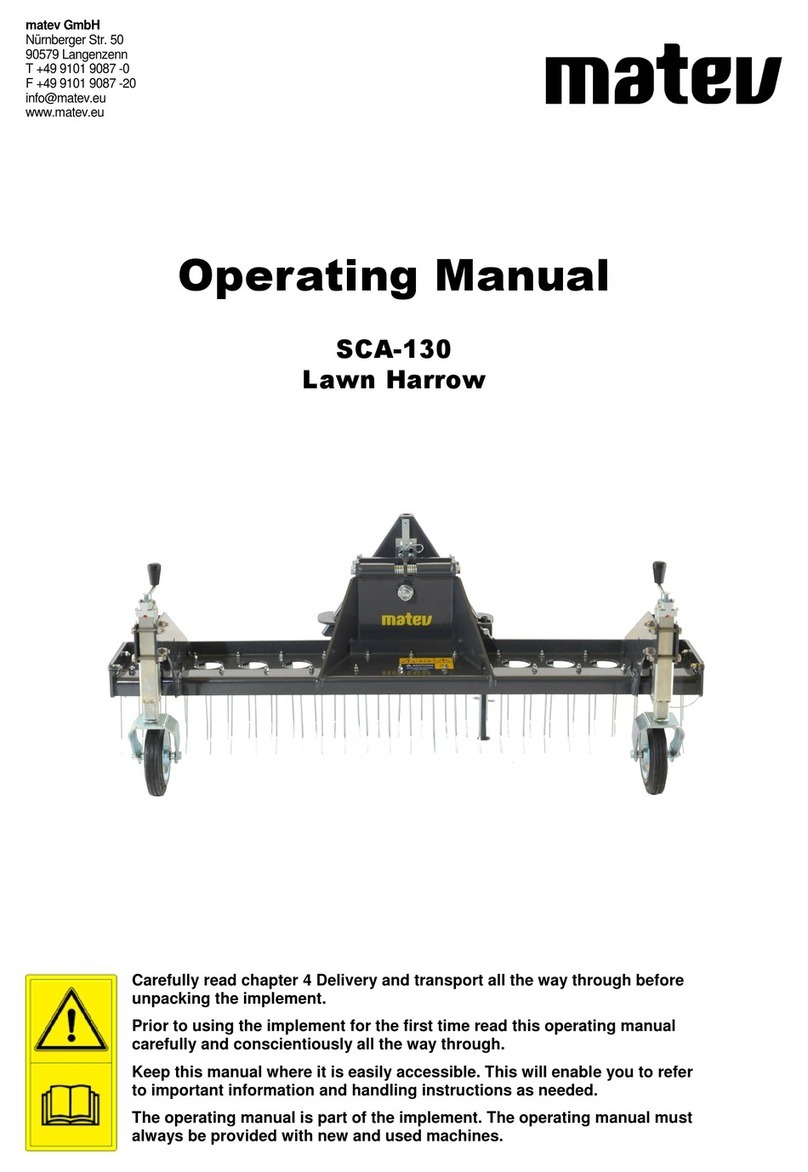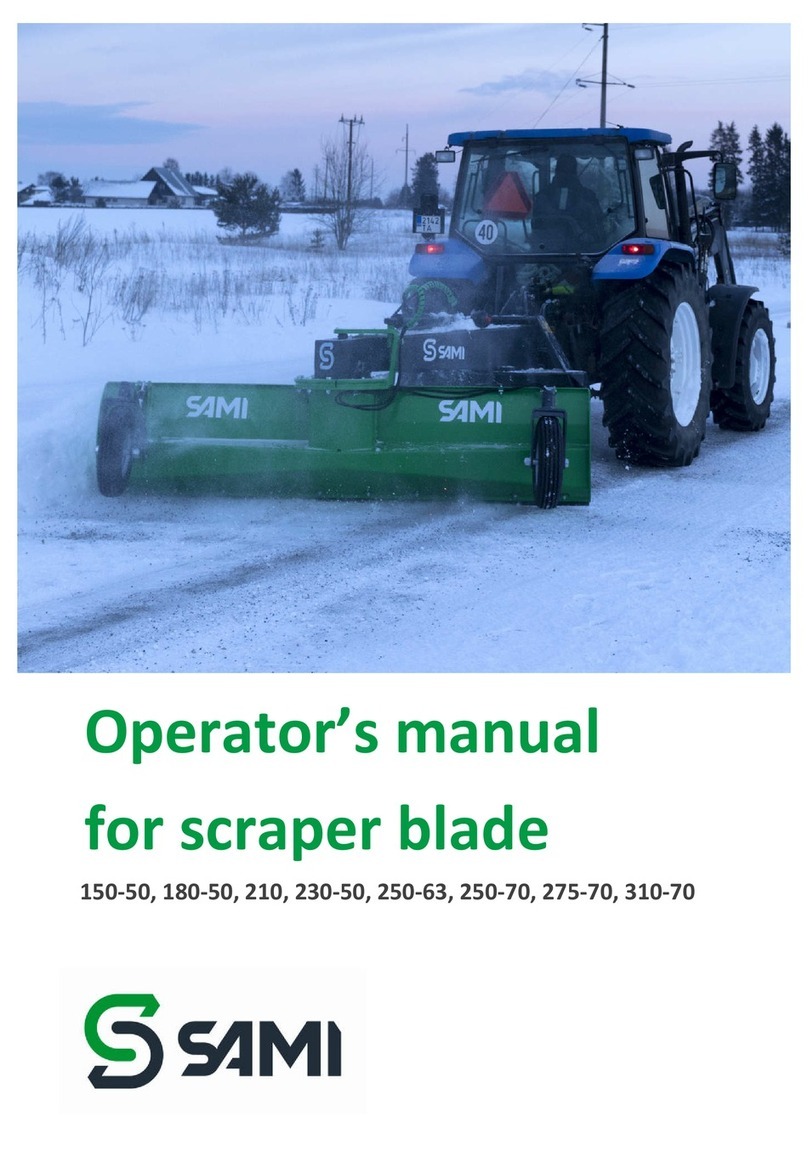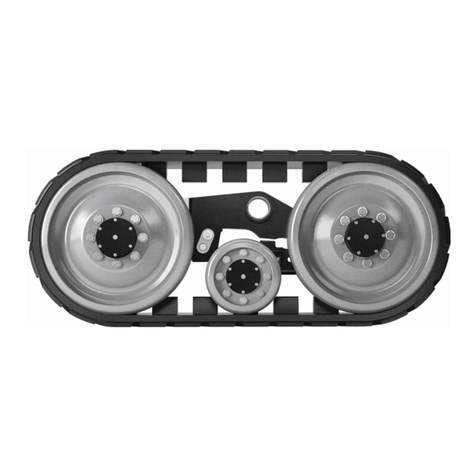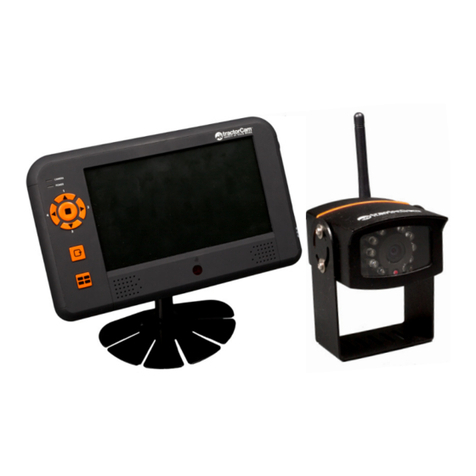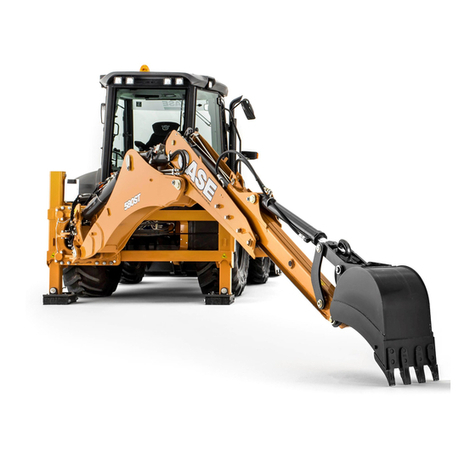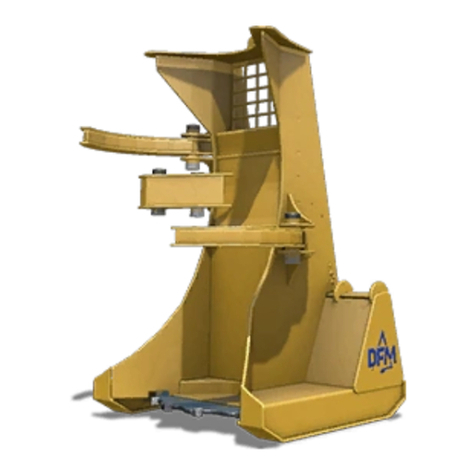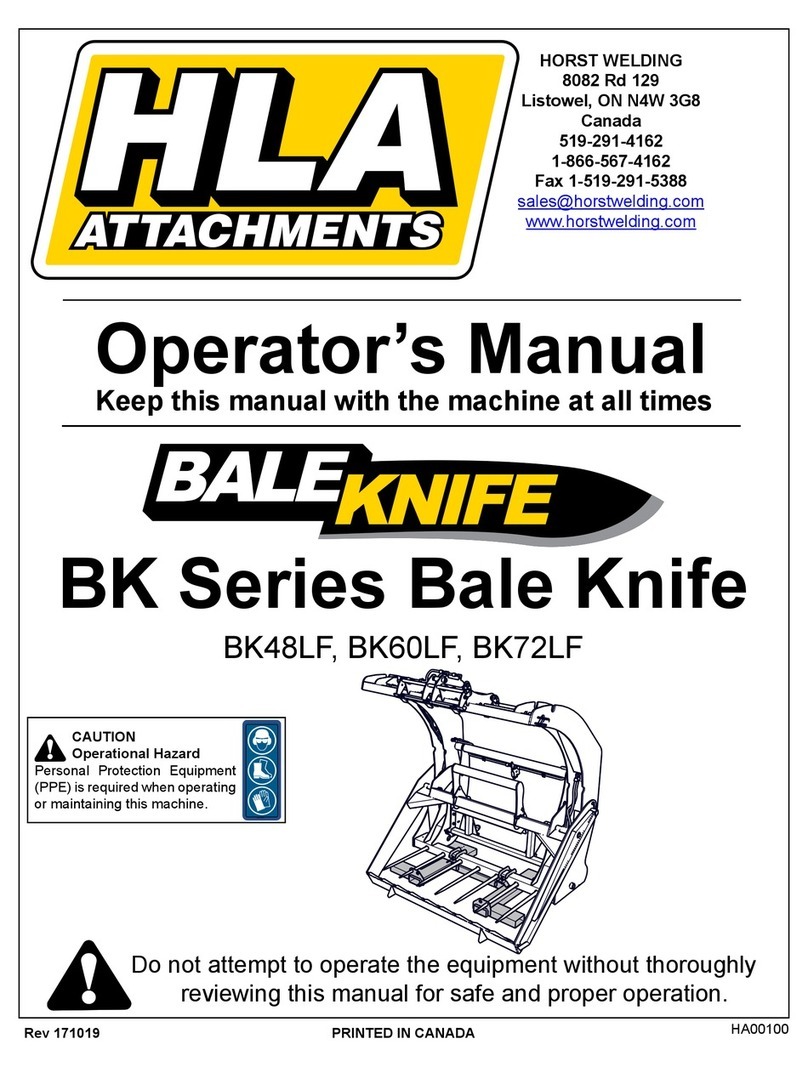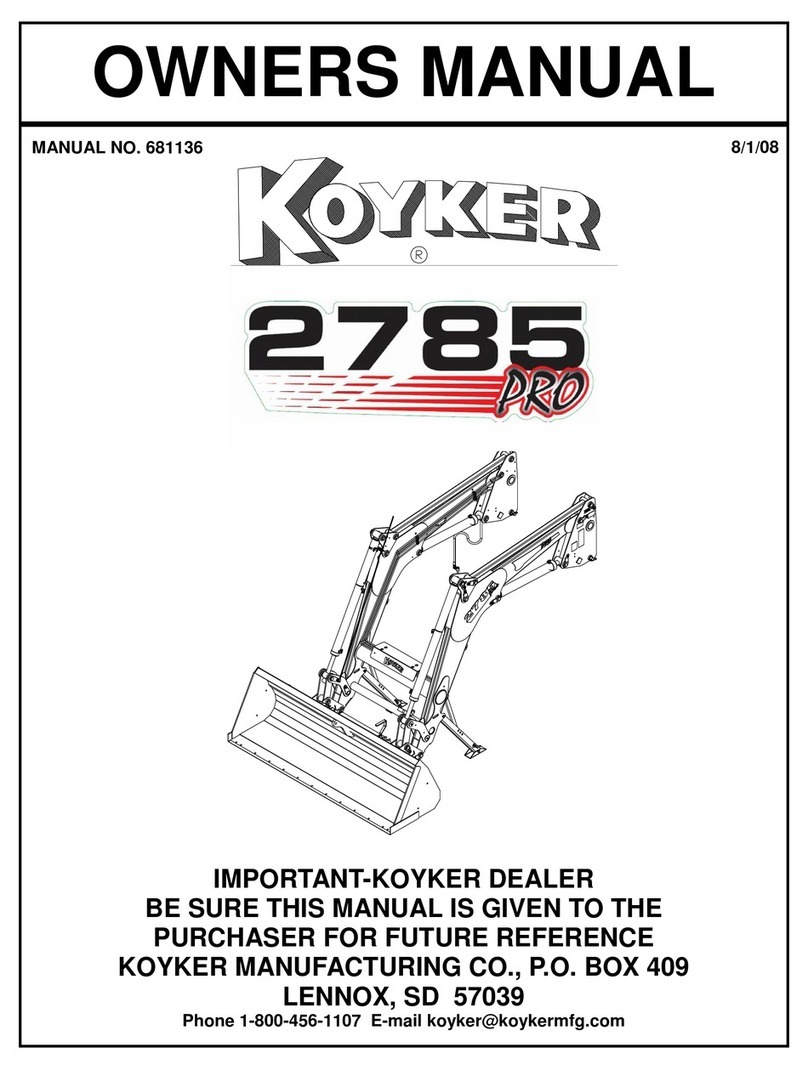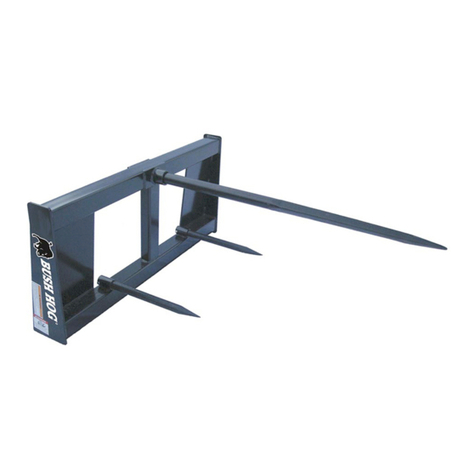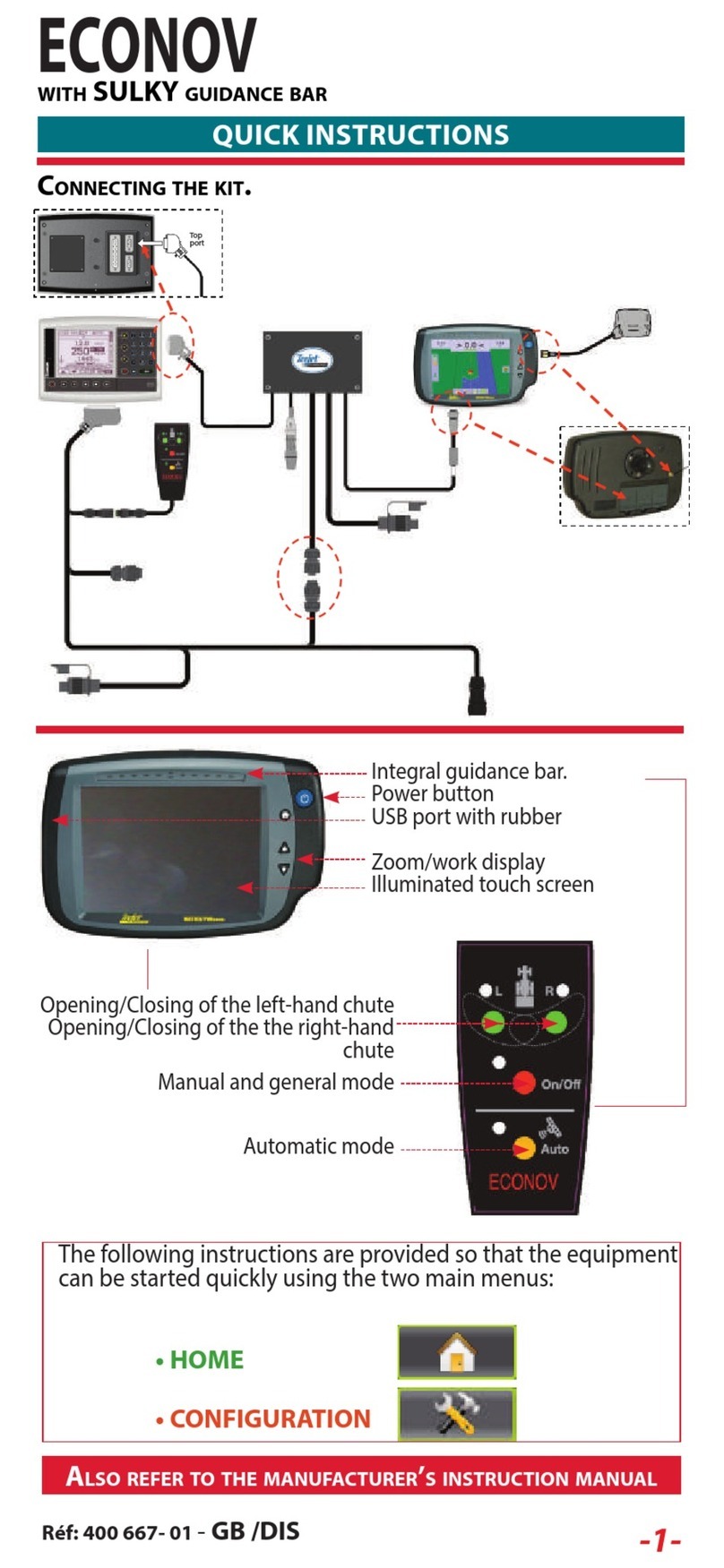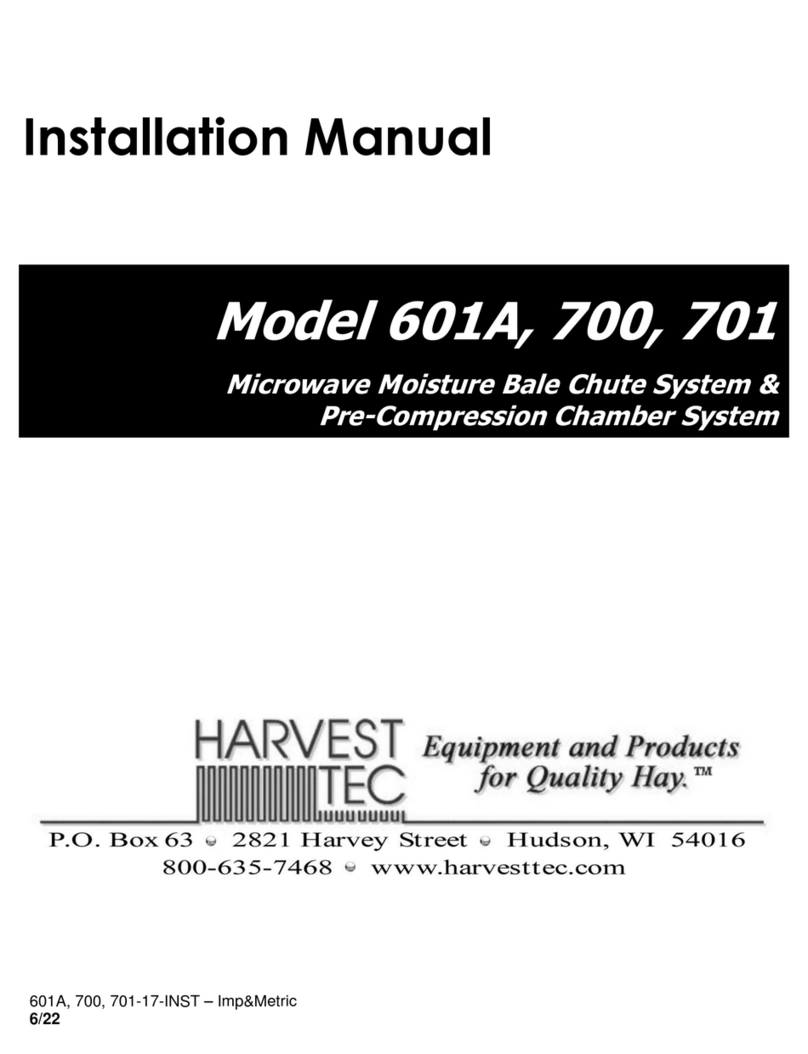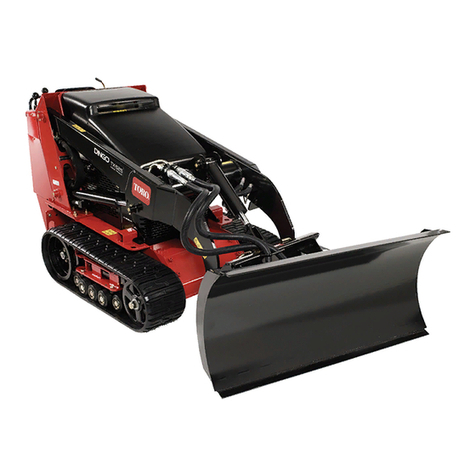
5 (22)
2. Designed purpose of use
The AVANT Pallet fork with side shift is an attachment suitable for use with AVANT multi purpose loaders
shown in Table 1. The pallet fork is an excellent tool for handling standard sized pallets.Pallet fork is an useful
attachment all year round for example on construction sites, farms, and especially at outdoor material
handling jobs, where conventional fork-lift trucks are impracticable. When operating with the pallet forks, the
performance and stability limits of the loader must be observed, especially when working on inclined terrains.
The pallet forks must not be used for lifting persons and it is prohibited to use the pallet forks to lift any kind of
access platform.
With the fork side shift mechanism, different pallet sizes can be transported easily and stacked precisely. The
side shift feature is controlled by the auxiliary hydraulic output of the loader, and the operating mode, side shift
or fork width, is chosen by an electric switch.A foldable load backrest extension is fitted as standard, which
must be used when handling loose materials that could fall from a pallet. If lifting and load handling tasks are
frequent, equipping the loader with the boom self levelling and the electric joystick will make repeated lifting
tasks easier.
The attachment has been designed to require as little maintenance as possible. The operator can perform
regular maintenance tasks. All repair work can’t be performed by the operator, and demanding repair and
maintenance operations are to be left for professional maintenance. All maintenance work must be done using
proper safety equipment. Spare parts must be identical with original specifications, which can be ensured by
using only original spare parts. A separate spare parts catalog may be available, consult your Avant dealer.
Familiarise yourself with the manual's instructions regarding service and maintenance. Please contact your
AVANT retailer if you have additional questions about the operation or maintenance of the equipment, or if
you require spare parts or maintenance services.
Table 1 - Pallet fork with side shift - Compatibility with Avant loaders
The compatibility recommendations are based on the width of the loader, lifting capacity, and adequate
breakout force. The operating capacity of the loader can be determined by using Table 5 and the load diagram
shown in the operator's manual of the loader. Depending on operating conditions additional counterweights
may also be required. For compatibility information with a model not shown in table above, contact your Avant
dealer.
